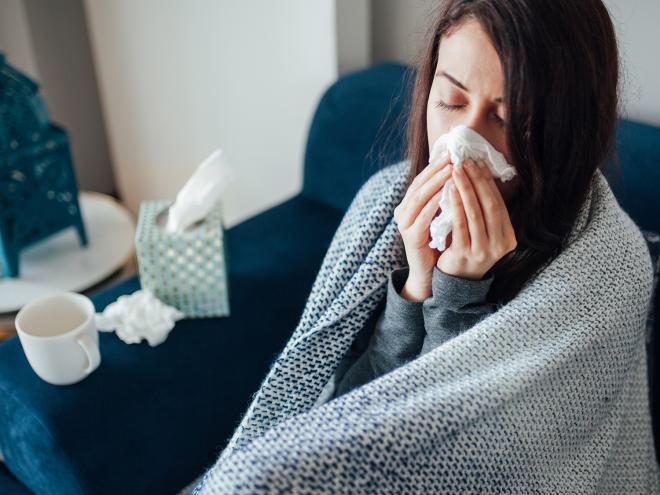The winter months can be tough for all of us. Cold temperatures, short days and less sunlight can make life feel more difficult to manage and can cause many to experience changes in mood with the changes in the weather.  Combine that with the high levels of stress, anxiety and even depression brought on by COVID-19, and those who suffer from seasonal affect disorder (SAD) may experience more severe symptoms than normal.
Combine that with the high levels of stress, anxiety and even depression brought on by COVID-19, and those who suffer from seasonal affect disorder (SAD) may experience more severe symptoms than normal.
What is SAD?
SAD is a type of depression that is typically related to changes in season – most commonly beginning in fall/winter when the days get shorter and the amount of daylight decreases. About 2-3% of Canadians will experience SAD in their lifetime with women and those with a family history of depression at higher risk. Another 15% will experience a milder form of seasonal depression. While the cause of SAD is still unclear, it is believed to be triggered by disruptions to our “biological clock” which controls our sleep-wake patterns and other circadian rhythms, as well changes in serotonin and melatonin levels – brain chemicals that affect mood. Common symptoms include:
-
Feelings of anxiety, depression, sadness, hopelessness, and guilt
-
Low energy / fatigue
-
Trouble sleeping or oversleeping
-
Losing an interest in activities you normally enjoy
-
Changes in appetite and weight
SAD and COVID-19
With the ongoing pandemic, stresses from lack of social interactions/isolation, fear over the health and safety of ourselves and our loved ones, and the overall uncertainty of this new way of life can negatively affect anyone’s mental health – especially those already living with depression. COVID-19 is also causing people to stay inside more, further decreasing their exposure to natural light – a driving factor of seasonal depression. For those who suffer from SAD, this can mean more severe symptoms than normal and can also mean those who may typically be asymptomatic to experience symptoms.
Vancouver-based psychiatrist, Dr Matthew Chow, says he has seen an uptick in the number of people who are experiencing difficulty this winter.
“It has been particularly tough as we experience a second wave of COVID-19 and there is so much uncertainty going into the holiday season. For people continuing to struggle, there are ways to manage the symptoms yourself and there is professional help available if you need it."
What you can do

Depending on the severity of the symptoms, there are a number of different treatment options for SAD so check with your doctor or health care provider if you are concerned. There are also steps you can take to help prevent the onset or magnitude of the symptoms:
- Use a SAD light – studies show sitting in front of one, especially in the morning, can help reset your biological clock and cause your brain to release mood enhancing chemicals
- Spend time outside – when the weather permits and in keeping with COVID-19 safety guidelines get outside as much possible, even on cloudy days the effects of daylight still help
- Eat a well-balanced diet – one that includes an increase in mood-improving nutrients and vitamins and consider taking a vitamin D supplement
- Exercise regularly – COVID-19 may keep you from the gym, but you can still exercise at home or go for a walk/run and aim for a minimum of 30 minutes three times a week
- Stay connected – social support is very important, so schedule those zoom or facetime calls with family and friends
During these uncertain and stressful times, feelings of depression and mood changes may be compounded. Says Dr Chow,
“Fortunately there are causes for optimism, including the record-setting pace of development of new vaccines and evidence that the majority of people are finding ways to cope during these challenging times.”
But if you experience “down days” at the same time every year or they persist for days at a time, see your doctor or health care provider. It’s important that we all look after our mental health and well-being.
For more information please visit HealthLinkBC or the Canadian Mental Health Association.



